Ten years ago, the union of Alpbach and the Wildschönau created the Ski Juwel – one of Austria’s prettiest and friendliest ski areas. Low-key, and relatively low-cost, it’s a place to target if you don’t fancy the razzmatazz of the big-name resorts, but still want your fair share of good piste-skiing.
Altitude: 828-2025m
Lifts: 45
Top lift: 2025m
Ski area: 109km of piste
Adult lift pass: 256-284€ for six days
Official Site |
Ski Map |
Webcam
Johann Schneider was born in a farmhouse in the village of Alpbach in 1957 – and still lives there. He’s a ski and snowboard instructor, as well as the team leader of Alpbach’s mountain patrol, and is delighted by the recent union of the Alpbach and the Wildschonau ski areas to create Ski Juwel. “In my opinion,” he says, “Ski Juwel Alpbach Wildschönau has something for everyone.”
Resort Overview
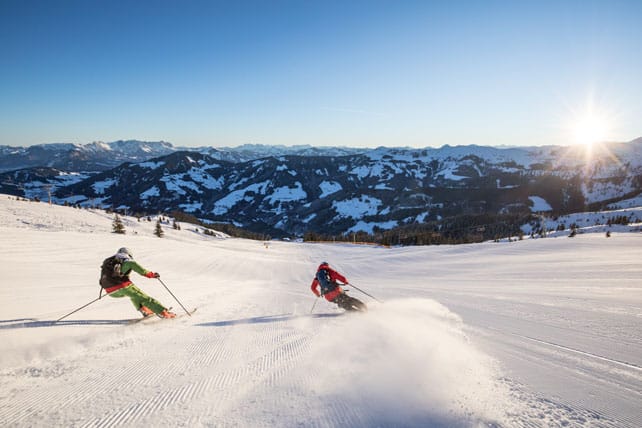
Ten years ago, Ski Juwel was formed by the union of two neighbouring ski areas – Alpbach and the Wildschönau. The result is a medium-sized area that offers excellent intermediate skiing, includes one black piste of rare quality and – at its western end – is perfect for first-time ski tourers. It also encompasses two resort villages which, in their separate ways, will charm your socks off.
What’s more, for anyone who’s used to the eye-watering prices of Europe’s A-list resorts, the cost of holidaying here is a pleasant surprise. In a really lovely hotel like the four-star superior Boglerhof in Alpbach, a junior suite costs less than a standard room in three-star hotel in Meribel in France.
When you add in the sense that this is not just a tourist destination, but a place where people still farm, dress up for church on Sundays, and distil the strangest schnapps in Austria, you begin to understand the region’s very particular appeal. It’s no wonder some skiers come back year after year to holiday here.
There is one important caveat, though: the altitude. Almost all the skiing here is below 2000m, which is low for a modern ski area.
Yes, there are plenty of snow cannons to provide Mother Nature with back-up, covering 85% of all pistes. What’s more, because a lot of the skiing is below the treeline, visibility is good when it’s overcast or snowing (because all the trees by the side of the pistes cast lowlights onto the snow). The mix of farmland, forest and smooth-shouldered mountains, topped off by rugged peaks, makes for a much less austere setting than the high-altitude resorts, too.
But all the same, Ski Juwel’s cover is vulnerable to mild weather – and the snow on the lower pistes can get very slushy by mid-afternoon during a thaw. For the best chance of good cover, top to bottom, ski it in January or February.
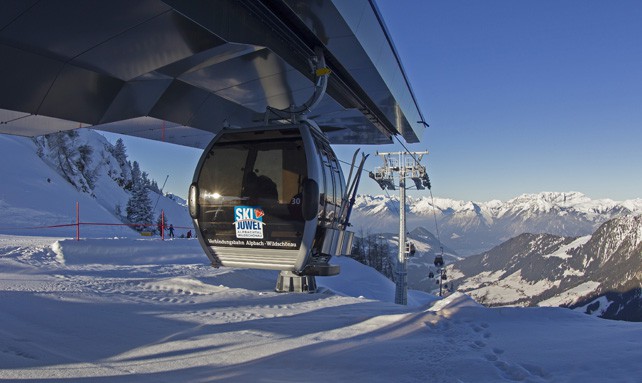
A Short Guide to the Skiing in Ski Juwel
Ski Juwel’s 109km of pistes are grouped into three main sectors. You’ll find a good summary of their characteristics in the Welove2ski feature “The Secrets of the Ski Juwel Piste Map”. If the snow’s good, beginners and intermediates will have a blast here. There are challenges for more advanced skiers too, if they know where to look.
Bear in mind that 109km is the total length of the ski area as measured by the “straight down the mountain” method. This has become the predominant method of measuring pistes in Austria. Elsewhere in the Alps this method hasn’t become so prevalent. So to give you a proper idea of the comparative size of its on-piste ski area alongside, say, Tignes-Val d’Isère, you should use Ski Juwel’s “sporty” measurement, which is 145km (and presupposes you’ll be making lots of turns on each piste as you descend).
There’s lot of variety in the Alpbachtal
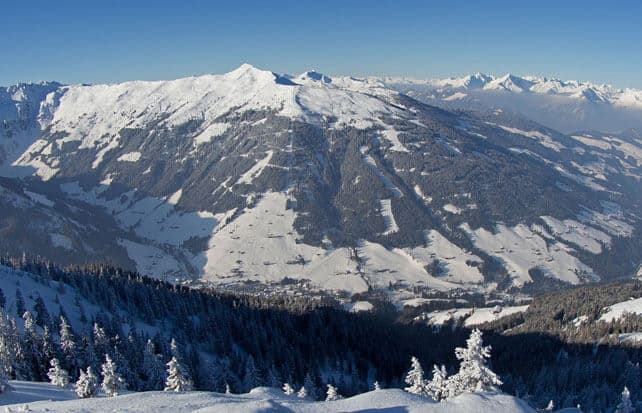
The largest area of pistes is in the Alpbachtal. Here, on the opposite side of the valley from the village of Alpbach, is a tightly-knit network of pistes. They’re mostly north or east-facing, and drop through nearly 1000m of vertical descent beneath the 2128m Wiedersbergerhorn.
There are two lovely top-to-bottom runs on offer here: one of which runs down to the hamlet of Inneralpbach, and the other which plunges back to the lift station beneath the main village. Both are a joy to ski, and can be tackled by athletic intermediates. Snow conditions are the biggest challenge, usually: milder weather the lower sections can be wet and heavy.
If the weather is warm, it’s best to stick to the top half of the ski area – and to make that easier, the resort has installed a new high-speed six-seater chair lift, linking a midstation at 1638m with the top of the ski area at 2030m. New pistes have been developed here too, so that all levels of skier can have fun here.
Meanwhile, beginners get two areas of nursery slopes in which to make their early turns – one in the village of Alpbach, near the church, and the other the bottom of the lifts in Inneralpbach. In Inneralpbach, you’ll also find the a private area of nursery slopes run by the family-friendly Hotel Galtenberg.
Near the top of the lift system on the Gmahkopf you’ll also find an area of easy pistes to which many beginners can progress by the end of their first week. Any children in your party will be desperate to get up there anyway – thanks to the opening of the Alpbachtaler Lauser-Sauser Alpine coaster in 2017, next to the top station of the Wiedersbergerhornbahn gondola (current prices are €6 for adults and €5 for children for each descent).
https://www.youtube.com/watch?v=N6XVFrkC5R8
Alpbach is also a great place to try ski-touring for the first time
Fancy walking up a mountain as well as skiing down it? Alpbach is the perfect place to try it for the first time. Hire a guide from the Alpbach Aktiv ski school, follow touring route 66 up from Inneralpbach, and pretty soon you’ll be winding through farmland and forests on your way to the summit of the Wiedersbergerhorn. The climb should take 2-3hrs, and once you get to top you can ski back down on groomed intermediate pistes or through powder. In other words, you don’t have to be an expert to fall in love with ski-touring here.
Auffach has the most ego-boosting intermediate pistes
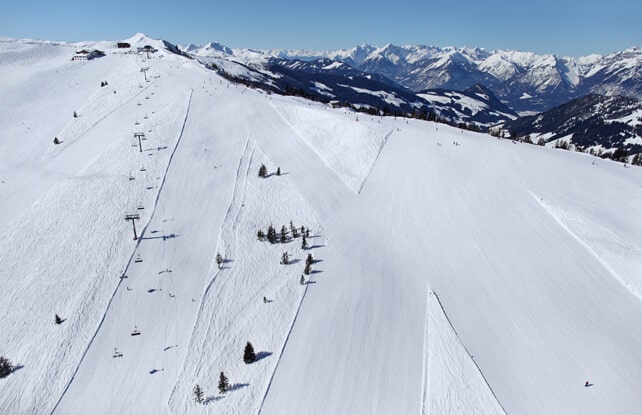
In the next valley north lies the second-largest sector of pistes, above the village of Auffach. From Auffach, it’s served by a €18 million, high-speed gondola, the Schatzbergbahn. The area is also linked to the Alpbachtal by the Verbindungsbahn gondola.
The area offers top-to-bottom skiing, right down to valley floor, although nearly everyone sticks to the unusually wide, confidence-boosting pistes above the treeline, just beneath the 1903m peak of the Schatzberg. The runs here are quite short, but they’re perfect for an early-morning burn as soon as the lifts open – when you can get up on your edges and carve enormous, swooping turns.
Most of these pistes are on the north-facing side of the ridge and hold their snow well, given the modest altitude (beneath 1900m). But one piste – Red 13 on the map – pops over the south side, and drops about a third of the way down towards the bottom of the Alpbachtal. It’s well-served by snow cannons. “It can be icy first thing,” says one British skier who knows the area well, “but is usually good for a couple of hours from 11.30am onwards as the snow starts to soften. It’s a steep red with level patches and is the best run above Auffach.”
For beginners, the Schatzberg Zwergenland has been developed at the Schatzbergbahn gondola mid-station at around 1200m. This includes a draglift and four magic-carpet lifts with an igloo, nursery slopes, easy progression pistes and a mini funpark of little bumps and jumps. It’s also the start of a toboggan run down to the valley.
Niederau is Beginner Central. But it’s also home to the area’s best piste
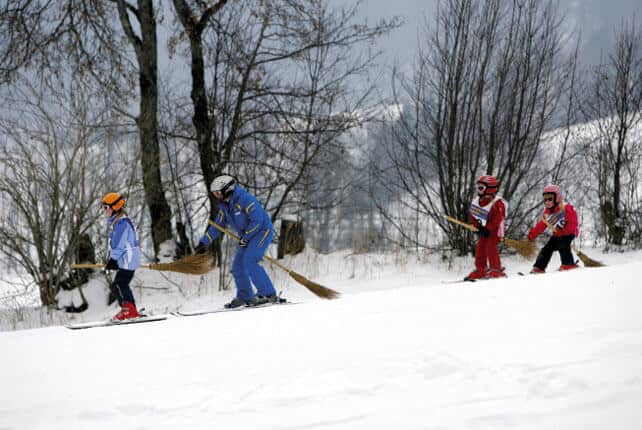
Niederau is set in a steep-sided little valley, one face of which looks due north. As a result, the slopes here are almost perpetually in shadow, and hold their snow extraordinarily well, given they top out at just 1600m.
Yes, okay, the cover here is often hard-packed, but if you’ve got the appetite for steep pistes, then you have to check out the former FIS-rated race course that drops down from the 1621m Lanerkopf, back into the village. It’s a lovely, sinuous thing, which mixes fall-line sections with sharp turns – and, crucially, it’s almost always deserted. Why? Because Niederau’s ski area is separate from the Auffach-Alpbach lift system, and few skiers can be bothered to ride the shuttle bus between them. On most days the only other skiers you’ll find here are instructors from Niederau’s ski schools burning off steam.
There are a couple of other good hell-for-leather pistes here, but these days Niederau makes its living from beginners, rather than adrenaline junkies. There are several long, flat nursery slopes in the meadows next to the village, and a couple of easy pistes at the top, too, and in most weeks they’re buzzing with snowploughers mastering the basics. It’s a friendly, unpretentious scene, and given the relatively low prices of a package holiday here it’s easy to see why it’s so popular with first-time British and Dutch families.
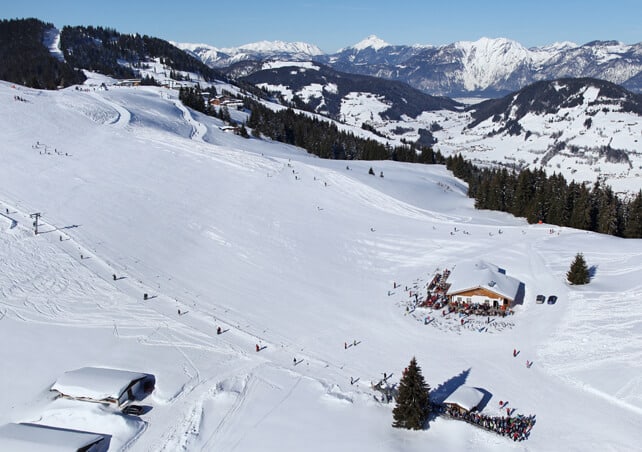
The main disadvantage is the low elevation of the nursery slopes at the bottom, which means the quality of the snow there can be iffy: but at least there is an easy blue piste at the top of the lift system at 1500m to which beginners can progress.
Where to Stay in the Ski Juwel ski area
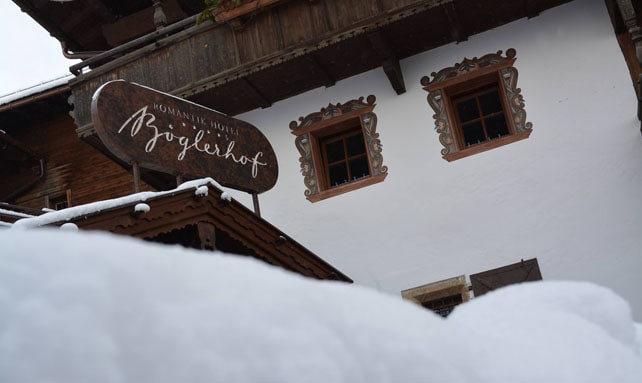
The three main villages in Ski Juwel have quite different characters. So pay attention when you book your trip. A keen intermediate skier doesn’t want to end up in Niederau, for example.
Here are the main characteristics of each.
Alpbach is the most comfortable and prettiest village
In 1953 Alpbach laid down tight laws controlling the architecture of new buildings: for example, they couldn’t be more than three storeys high, and each one, above the ground floor, had to be made of wood. It’s also held onto its village-y proportions – and as result has carved out a niche for itself as a quiet, cute and traditional alternative to purpose-built mega-resorts such as Tignes and La Plagne. It’s home to several upmarket family-owned four-star hotels, some well-run guesthouses, and is five minutes from the nearest lift station by shuttle bus.
In other words, it’s the place to target if you want the kind of easy-going holiday which mixes skiing with some time in your hotel’s spa, or kicking back in the hotel lounge with a hot chocolate/glass of wine and a good book. It’s absolutely not the place to go if you’re after buzzing apres-ski bars.
Hotel Boglerhof
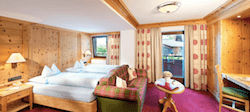
Natur & Spa Resort Der Alpbacherhof
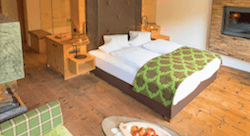
Hotel Zur Post
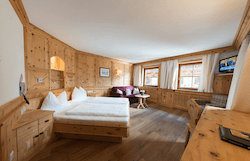
Haus Sonnwend
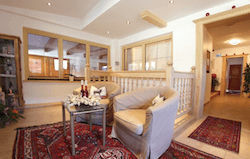
Pension Bergwald
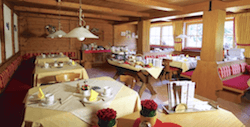
Inneralpbach is family-friendly hamlet
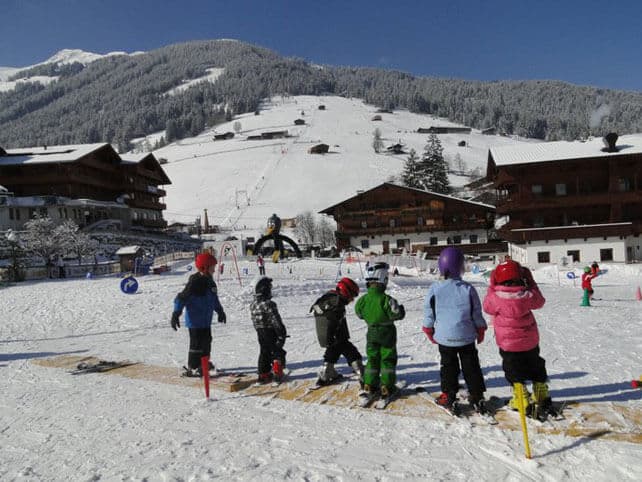
Inneralpbach is a small collection hotels (and a microbrewery) a little higher up the valley from Alpbach. At night it’s very quiet, but for keen skiers it has a big advantage over Alpbach: the lifts are on your doorstep, and they go in two directions – to the Schatzberg slopes, above Auffach, and also to the pistes on the Wiedersbergerhorn. If Ski Juwel’s pistes are more important to you than Alpbach’s old-school Tirolean atmosphere, this is the place to come.
Kinderhotel Galtenburg
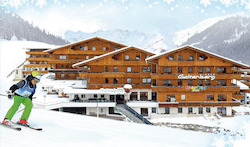
Auffach is a low-key base for intermediates and beginners
Auffach is a long, thin village set in a pretty valley of meadows, forests and farmland. It can get a bit raucous, around the Gruttn Stabl apres-ski bar, as the lifts close, but generally this is a low-key place, whose inhabitants are as likely to be farmers and commuters as hoteliers and ski shop owners. However, if cute and traditional is your watchword you’ll probably like Alpbach more.
Accommodation here is very reasonably priced, and there’s a gondola to whisk you up to the easy intermediate pistes on the Schatzberg – as well as an area of nursery slopes at the gondola mid-station. Regular shuttle bus services connect the village to Niederau five miles away.
Hotel Platzl
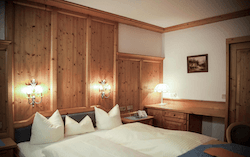
Hotel Auffacherhof
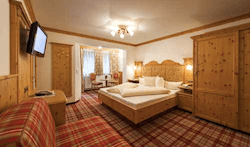
Niederau is for beginners
Niederau’s pistes and lifts are separate from the rest of the Ski Juwel lift system, and you’ll need to ride the shuttle bus over to Auffach if you want to ski the majority of its pistes. In other words, don’t stay here if you’re an intermediate (unless you can bag a ultra-cheap low-season package holiday). You’ll be much better off in Auffach or Alpbach – whence you can day-trip to Niederau to test yourself against Niederau’s handful of exciting pistes.
That said, lots of beginners love Niederau. In part that’s because of the relatively low prices. But also it’s down to the friendly and unpretentious atmosphere. If you’re worried that ski holidays are only taken by people called Binty Bash-Jones and Otto von Schnitzel, and that you’ll never fit in, this is the place to make your first turns.
Sport & Vitalhotel Wastlhof
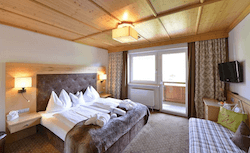
Hotel Hannes
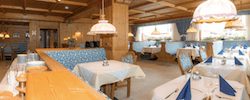
Harmony Hotel Sonnschein
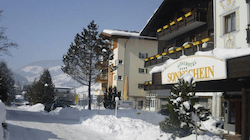
Ski Schools in the Ski Juwel ski area
There are six ski schools in Alpbach’s valley, two in Auffach, two in Niederau, and one in the little village of Oberau, between Niederau and Auffach, where there are a couple of beginner pistes. Group lessons tend to last for much of the day, rather than just for mornings or afternoons. In Alpbach, for example, children’s lessons with the Ski and Smile Kids’ School run from 9.30am-2pm, and cost €269 for five days, including ski hire and a midday snack. That’s only 10% dearer than five morning-only lessons with the ESF in Meribel (which don’t include equipment hire).
Read the Welove2ski features “The Best Ski Resorts in the Tirol for Beginners” and “The Best Ski Resorts in the Tirol for Families” for more on the Alpbach and Niederau’s ski schools and facilities for first-timers.
Where to Eat in Ski Juwel
Mountain restaurants

Pick of the mountains huts above Alpbach is the Böglalm, panelled with battered old beams, and blessed with a crackling fire, and lots of cosy little snugs. The food is staunchly traditional, and locals like it as much as the visitors. There’s even a stammtisch table set aside for them. The alm is on the final leg of the long run down to Inneralpbach and does barbecues on sunny days.
Meanwhile, a little higher up the mountain, the Kafner Ast is rather more modern, but has a pretty, woody interior, a big sun deck and irresistible home-made cakes.
Over on the Auffach sector, the Gipfohit is the place to go. (Pronounced with a soft G, “Jipfohit” is how Gipfel Hutte comes out in the local dialect. It means summit hut.) They do great Tiroler Grostl here, and a killer apple strudel.
Restaurants in the villages
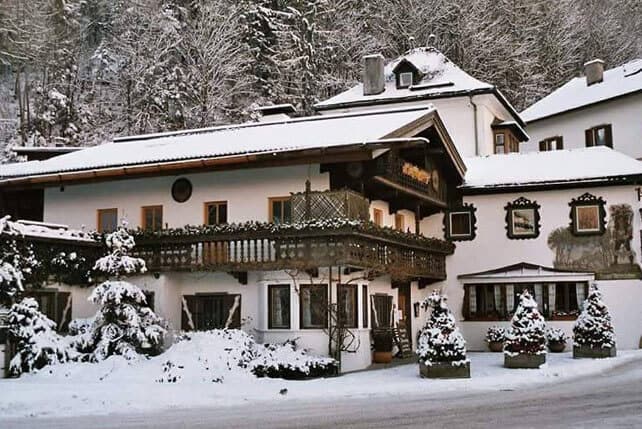
Many visitors in the Ski Juwel eat in their hotels at night on half-board packages, so the independent restaurant scene is a little underdeveloped. But there are a few standout establishments – notably Sigwart’s Tiroler Weinstuben in the Alpbachtal. Founded in 1774 at Brixlegg on the road to Alpbach, it used to be a meeting point for farmers, craftsmen and traders, until Anton Sigwart bought the house in 1850. Incredibly, the 4th generation of the Sigwarts still run it – Traudi cooks and Anton is the sommelier – and today the restaurant has three toques from the Gault Millau guide as well as regularly featuring among Austria’s 200 best restaurants.
Meanwhile, up in the village, the Boglerhof and Alpbacherhof hotels are both good for a smart dinner.
For something more informal, head to Messner’s for pizza. Cafe Genuss is an essential stop for coffee and cake.
If you’re staying in the Wildschonau, then the Gasthaus Thalmuhle is the place for a celebration meal – on the road between Auffach and Niederau. One of the oldest inns in the Wildschonau, it’s creaky, wood-panelled place, which is big on local flavours and serves an irresistible pork filet on toast with a chantarelle mushroom sauce. You’ll often find as many locals in there as tourists.
In Auffach, the Marius restaurant and bar has a good wine list and delicious home-made pasta, while in Niederau, Ferrari pizza is the place season-workers and ski instructors go to for a laid-back and chatty meal.
Nearby, the four-star Wastlhof has one of the best restaurants in town for more formal meals. Walk-ins are as welcome as hotel guests and the menu makes extensive use of local produce, such as apples from the owners’ own farm. One of their local specialities is a magnificent kaspressknodelsuppe – a beef consommé with cheese dumplings.
Where to Party in Ski Juwel
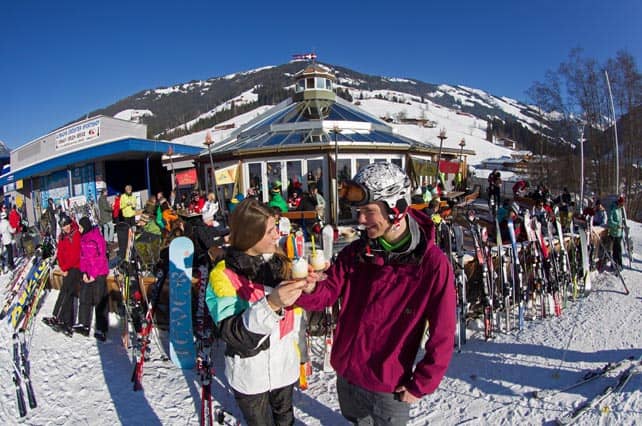
Niederau has the buzziest apres-ski scene – driven as much by the many Dutch and German ski instructors in the village’s two ski schools as it is by visiting skiers. You don’t have to look hard to find it, either – just head to the Schnappshutte. At the weekends, many of the ski instructors jump in taxis down to the nightclubs in Worgl.
Careful what schnapps you order here, by the way. The best stuff comes from Siegried Kistl, who makes it in a beautiful copper still up at his farm, the Zwecklhof. He distils schnapps from every kind of fruit imaginable, but his Herzstück Williams, made from pears, is the most delicious – but at 42% alcohol by volume, it needs to be handled with care. You can buy it at the Wildschonauer farmshop at Oberau, or book a tasting up at his farm.
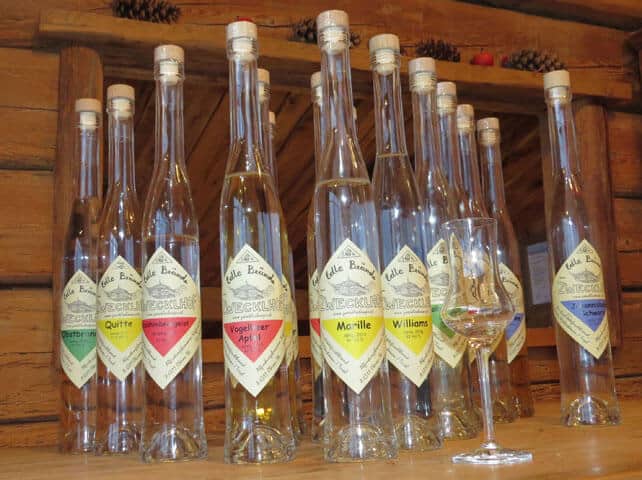
The schnapps to be wary of is the Wildschonau’s signature tipple, Krautinger, made from, er, turnips. “Drink too much of it and you’ll taste it every time you burp for the next two days,” says one British ski instructor in Niederau.
In Auffach, the oval Gruttn Stadl is where everyone goes for a drink as the lifts shut. “It’s run by a local farming family,” says one reporter. “They have a big cow bell above the bar which they ring when a customer buys the staff a round of shots. On Thursdays they have live music, and after all the skiers have gone back to their hotels it becomes a locals’ bar, and very laid back.”
The alternative is to pop into the quieter bar in the Marius restaurant next door.
Alpbach isn’t a party town, but Joe’s Salettl, which is slopeside at Inneralpbach is a good place to toast a big day on the mountain. In town, the Jakober Bar at the Gasthof Jakober is a popular spot for both locals and visitors, and the Post Alm is a large, atmospheric place where the Alpbach Visitors Club members meet).
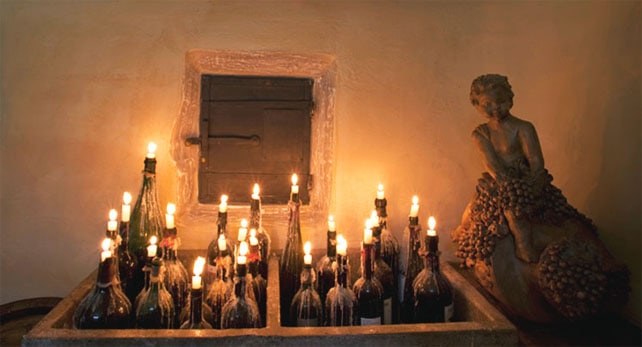
Also see our features on summer in Alpbach and Wildschönau.










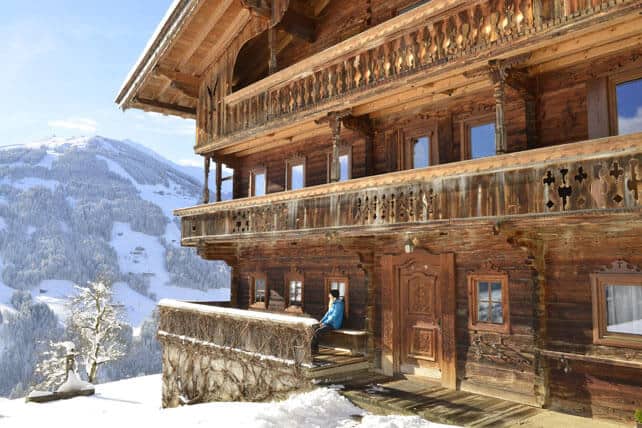
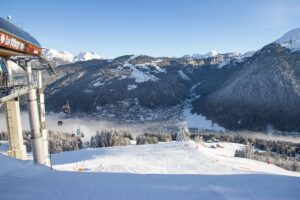
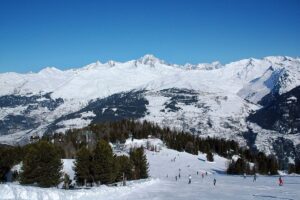
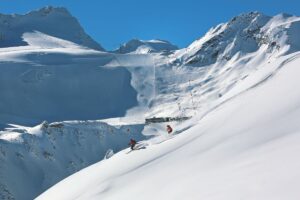
No mention of Reith im Alpbachtal – a good place to stay, easily connected to Alpbach by ski bus and with its own modern gondola and interesting, but small, ski area. Hotels and guest houses in Reith are extremely good value.
I’m a regular returnee ro Niederau. The free shuttle from Niederau to Aufach is just over 10 minutes, so hardly a deterrent, opening up the rest of Ski-Juwell. The local slopes at Niederau will keep an untermediare happy for a day, and the black under the chair is my favourite run anywhere. And if the Ski Juwell is not enough, then the big advantage of Niederau, over Alpbach is access to the Skiweldt. A short drive and you have acces to this immense area. You can ski from here on to Kitzbuhel if your legs are up to it. And if you stay at the Staffler they do ski-guiding everyday, so you don’t even need a car or taxi to make the most of the Skiweldt. Ski-Juwell, Skiweldt and Kitzbuler Alpen are all on the All Star Lift pass.